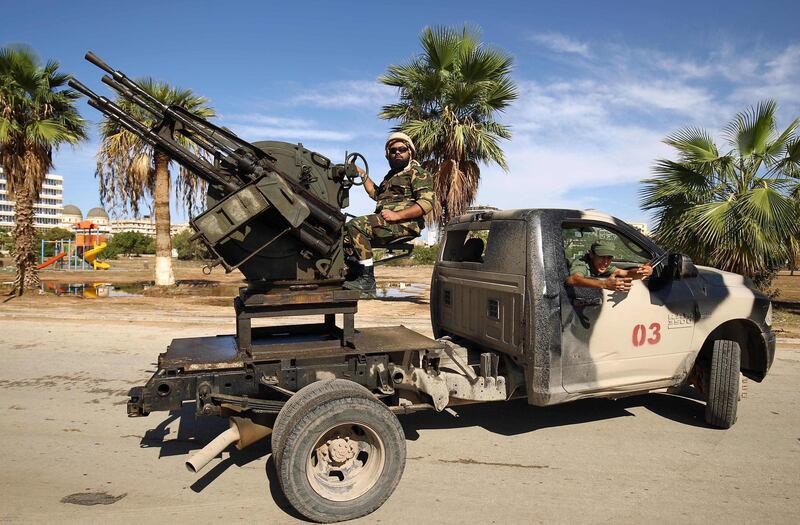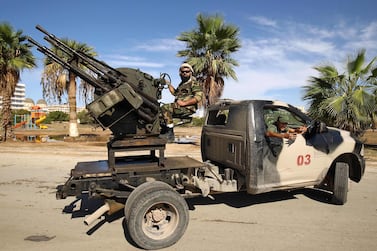Libya’s eastern leader Khalifa Haftar said his forces have reached the country’s largest oil field after pushing into the southwest as part of an effort to secure the region and its energy installations.
General Haftar’s self-styled Libyan National Army, the country’s largest military force, already controls the so-called oil crescent, a coastal area containing the major exporting terminals.
Sharara, a 300,000 barrel-per-day oil field, is a joint venture between Libya’s National Oil Corporation (NOC), Repsol, Total, OMV and Equinor. It has been closed since December by armed locals demanding better pay and investment in the remote area.
"Today our forces reached Sharara, in agreement with everyone at the field,” Ahmed Al-Mismari, the spokesman of the LNA, said in a televised news conference. “We are all Libyans, one Libyan army.”
Mr Mismari said the LNA took the area without a fight but didn’t give any indication as to whether it would hand the field over to the NOC, nor when it expected to restart production.Officials at Libya’s NOC didn’t immediately respond to requests for comment.
General Haftar has built the main force opposing the United Nations-backed government of Fayez al-Sarraj in Tripoli, the capital. It’s too early to say what his southern power play will mean for Libya’s oil industry.
Most of Libya’s crude shipments were suspended for weeks in June due to a standoff between Haftar and the NOC. Haftar had recaptured two important export terminals from rivals and transferred control of those ports and three others to an oil authority in eastern Libya that lacked international recognition. Markets were deprived of some 800,000 barrels a day, and Libya lost $930 million in sales.
The lack of clarity about what’s now happening in the south casts doubt on Libya’s plan to boost output to 2.1 million barrels a day by the end of 2021. The nation’s internal turmoil led the Organisation of Petroleum Exporting Countries in December to exempt Libya from participating in global production cuts.
Clashes between rival militias, as well as political jockeying by parallel governments in the east and west, have stunted Libya’s efforts to revive output following the 2011 uprising.
General Haftar’s announcement comes after a day of confusion and conflicting reports about developments in the region. Earlier in the afternoon, Sarraj’s Tripoli government named Ali Kana, a member of the Tuareg tribe and senior commander in the south, as military chief of the southwestern city of Sebha. The Tripoli government had called on Haftar overnight to halt airstrikes in the area.
The LNA now controls Sebha, Ubari and has reached the outskirts of nearby Murzuq, Mismari said, adding that the campaign would continue until all of Libya was secured.






